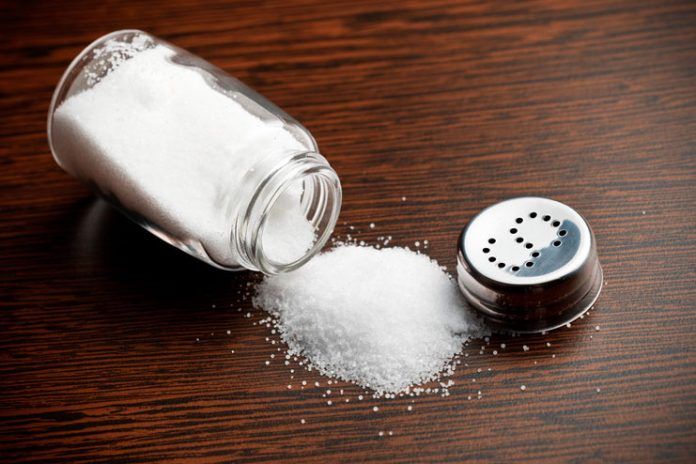Affiliate Disclaimer
Some links in this article are affiliate links. We may earn a small commission if you make a purchase through these links, at no extra cost to you. We only recommend products we find useful to our readersDo you ever feel bloated, more thirsty, or just off after a salty dinner? That’s your body saying it’s sodium overloaded.
Although salt is necessary for nerve impulses and muscle contractions, excess sodium can result in dehydration, puffiness, high blood pressure, and even long-term heart problems.
With processed foods adding in extra sodium, many of us unknowingly take in more than we should.
The good news? Your body already has mechanisms in place to remove excess salt, and a couple of easy changes in your lifestyle can accelerate the process. Here’s how to rebalance and feel great by flushing out excess salt from your body.
Read More: 8 Ways To Reduce Salt Intake Quickly For Better Well-Being
Symptoms of Excess Salt in the Body
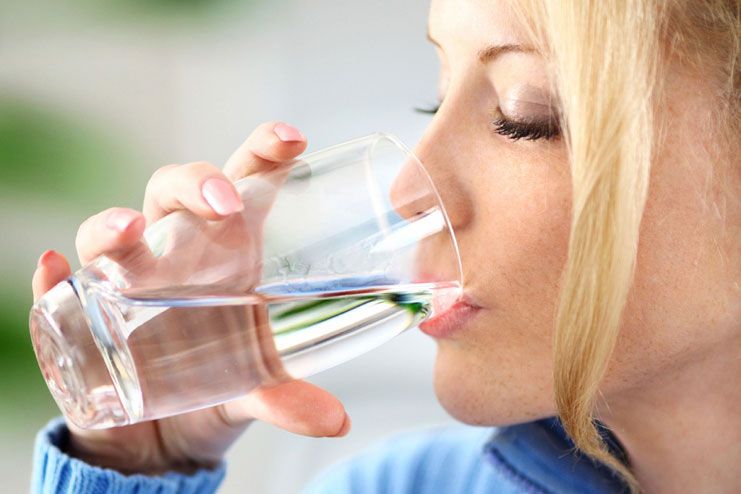
As mentioned earlier, too much sodium can disrupt your body’s functioning. This excessive sodium can show up as various symptoms. A few significant symptoms include:
- Dehydration and Constant Thirst: Sodium draws water from your cells, making you Feeling thirsty is a major sign that your body is dehydrated, coupled with constant thirst. Additionally, salty foods also make you more thirsty.
- Swelling or Puffiness (edema): Fluid buildup in your hands, feet, or face can be a sign of sodium overload. This is called edema and is a major sign of excessive sodium in the body.
- Frequent Urination: Your kidneys work overtime to flush out excess salt, causing more frequent bathroom If you find yourself visiting the bathroom too often, it is time to cut down on your salt intake.
- Mild Headaches: Dehydration caused by excessive sodium consumption can cause headaches. Though headaches can have other reasons too, dehydration due to excessive sodium is a significant factor.
- Increased Cravings for Salty Foods: A diet high in salt can get your taste buds craving more sodium-laden foods. The more salty foods you eat, the more you crave.
- Heightened Sensitivity to Bland Foods: Regularly eating salty foods can dull your palate, making natural flavors seem less intense. You might feel all other foods are bland and unappetizing. This is due to excessive salt intake.
If you notice these symptoms, it’s time to take action.
Read More: New Study Showcases the Average Consumption of Salt Might Improve Heart Health
7 Ways To Flush Out Extra Sodium From Your Body
Sodium is essential for balancing fluid levels, transmitting nerve impulses, and facilitating muscle contractions. However, consuming too much salt, especially from processed foods, can lead to dehydration, bloating, and various long-term health issues, such as high blood pressure.
The good news is that the body has natural processes to eliminate excess sodium. With a few smart lifestyle changes, you can enhance this process effectively.
Here are seven effective ways to flush out excessive sodium from the body:
1. Stay Hydrated:
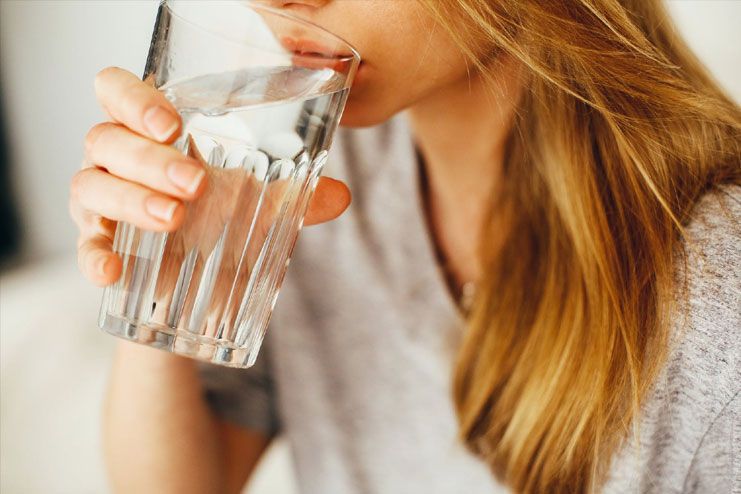 Drinking plenty of water is the easiest and most efficient method of eliminating excess sodium via urine. Hydration keeps electrolytes in balance and prevents dehydration. Doctors suggest about 3 liters of water per day for men and 2.2 liters for women, varying according to activity and environment.
Drinking plenty of water is the easiest and most efficient method of eliminating excess sodium via urine. Hydration keeps electrolytes in balance and prevents dehydration. Doctors suggest about 3 liters of water per day for men and 2.2 liters for women, varying according to activity and environment.
Tip: Squeeze some lemon or cucumber into your water for an added detox effect!
Read More: Top 10 Popular Myths About Hydration Busted!!
2. Boost Protein Consumption:
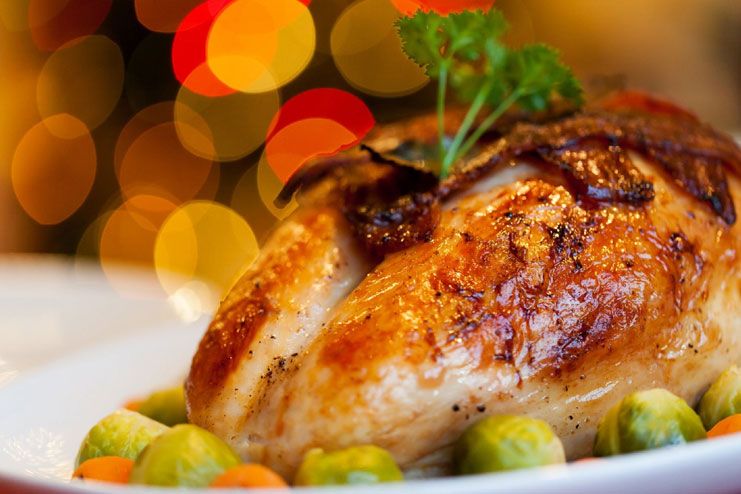 Protein is important for proper kidney function and effectively removing excess sodium. Many protein sources also contain potassium, which balances out sodium content.
Protein is important for proper kidney function and effectively removing excess sodium. Many protein sources also contain potassium, which balances out sodium content.
Top protein foods for balancing sodium:
- Lean meats such as chicken and turkey.
- Fatty fish such as salmon and tuna (and packed with omega-3s too!).
- Eggs, beans, lentils, and low-fat dairy foods.
3. Consume More Potassium-Rich Foods
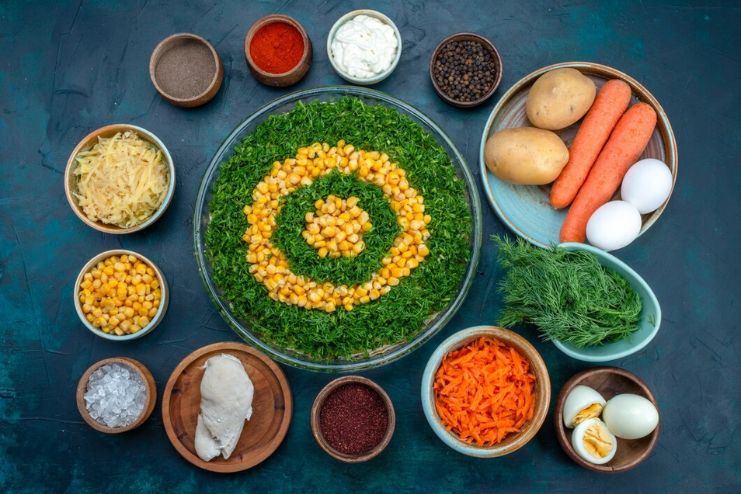
Potassium is essential for balancing sodium intake and ensuring healthy blood pressure. It works against sodium’s water-holding properties by encouraging fluid expulsion.
Best Potassium-rich Foods:
- Bananas, oranges, and melons.
- Spinach, kale, and other leafy greens.
- Sweet potatoes, avocados, and white beans.
- Yogurt and coconut water for a natural electrolyte boost
The recommended adult daily potassium intake is 3,500–4,700 mg.
4. Reduce Processed Foods:
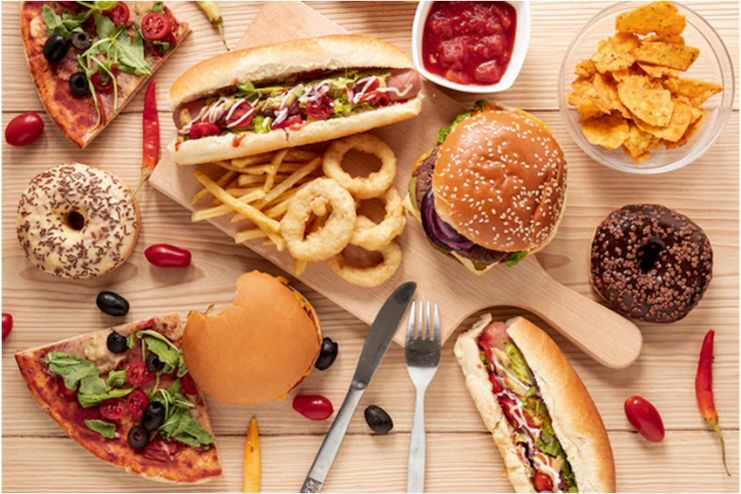
Processed and packaged foods often contain hidden sodium levels that exceed the recommended daily intake. Reducing consumption can significantly lower overall sodium intake.
High-Sodium Foods To Avoid:
- Canned soups and sauces.
- Processed cheeses and deli meats.
- Frozen meals and fast food.
- Packaged snacks, chips, and
Tip: Prepare fresh meals at home and flavor using herbs, lemon juice, or vinegar rather than salt!
Read More: 10 Most Addictive Foods According To Science You Didn’t Know Of!
5. Exercise Regularly:
 Sweating is an effective natural process through which your body can release excess sodium. Regular exercise, besides flushing salt out of the body, maintains a healthy heart.
Sweating is an effective natural process through which your body can release excess sodium. Regular exercise, besides flushing salt out of the body, maintains a healthy heart.
Best Exercises To Flush Out Sodium:
- Brisk walking, running, or cycling.
- High-intensity interval exercise (HIIT).
- Sauna sessions or hot yoga
Always rehydrate after sweating to restore and replenish the lost fluid. You can opt for infused water to make it more enjoyable.
6. Try Potassium-Based Salt Replacements:
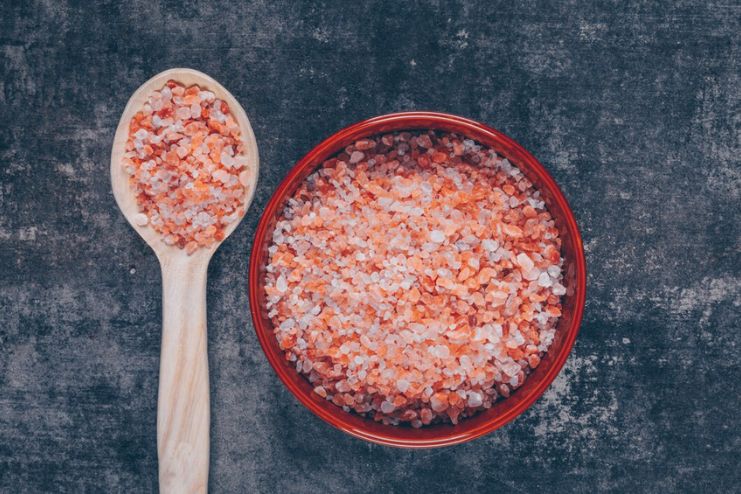
If you simply can’t picture your meals without salt, think about replacing regular table salt with potassium-based alternatives. They allow for the lowering of sodium consumption but preserve flavor.
The World Health Organization (WHO) recommends potassium-enriched salt substitutes as an effective strategy for lowering blood pressure and reducing the risk of heart disease.
Tip: Look for potassium chloride-based seasonings when scanning labels as a healthier option.
We love our favorite no-sodium, potassium-based salt substitute. You can check it out on Amazon.
7. Avoid Overhydration:
 While it is important to remain hydrated, consuming too much water has a flip side. Overhydration weakens sodium levels too much, causing a life-threatening condition known as hyponatremia (low blood sodium).
While it is important to remain hydrated, consuming too much water has a flip side. Overhydration weakens sodium levels too much, causing a life-threatening condition known as hyponatremia (low blood sodium).
Signs of overhydration:
- Nausea and confusion.
- Bloating in the hands or feet.
- Tiredness or muscle weakness.
Pay attention to your body’s warning signs and adopt a balanced strategy towards hydration.
Read More: Overhydration – Symptoms, Causes, Treatment, And Prevention
Final Thoughts: Take Charge of Your Sodium Intake
Salt is essential for your body, but excess sodium can lead to issues like bloating, dehydration, high blood pressure, and heart disease. Many packaged and processed foods contain more sodium than we realize, but you can take control of your intake.
Your body can handle excess salt, and you can enhance this process by drinking more water, eating potassium-rich foods, cutting back on processed items, and exercising regularly. Simple changes, like using potassium-based salts or opting for fresh foods, can greatly improve your health.
By managing your sodium levels, you reduce bloating and dehydration while protecting your heart and kidneys. Start making these small adjustments today, and enjoy greater energy and overall well-being.
-
April 2019Written by Somapika D
-
April 2025Edited by Vaishnavi
References
- https://www.heart.org/en/healthy-living/healthy-eating/eat-smart/sodium/sodium-and-salt
- https://pmc.ncbi.nlm.nih.gov/articles/PMC10863666/
- https://ods.od.nih.gov/factsheets/Potassium-HealthProfessional/
- https://health.ucdavis.edu/blog/good-food/why-its-important-for-you-to-drink-water-and-stay-hydrated/2022/07
- https://www.ncbi.nlm.nih.gov/books/NBK50958/
- https://pmc.ncbi.nlm.nih.gov/articles/PMC8628940/
- https://www.webmd.com/a-to-z-guides/difference-between-hypernatremia-hyponatremia
- https://www.pacificmenshealth.org/blog/5-signs-your-body-wants-you-to-cut-back-on-salt
In this Article













